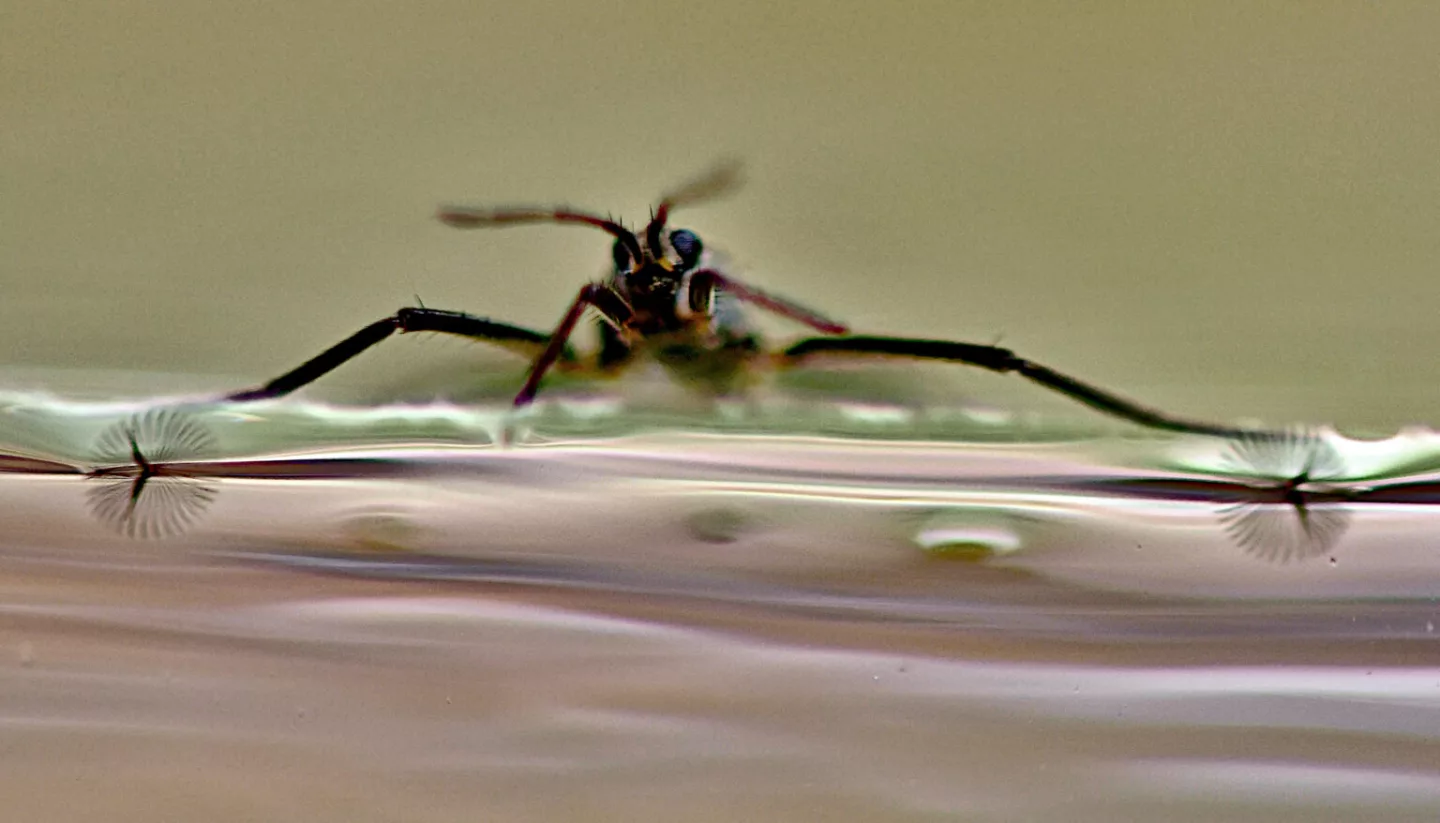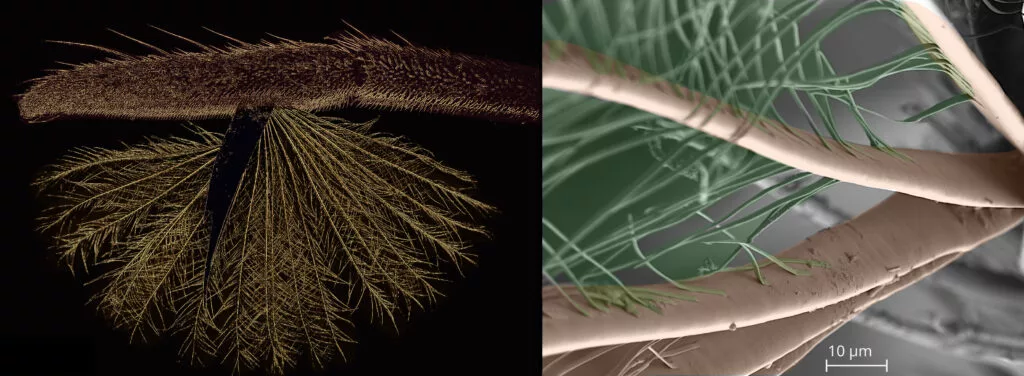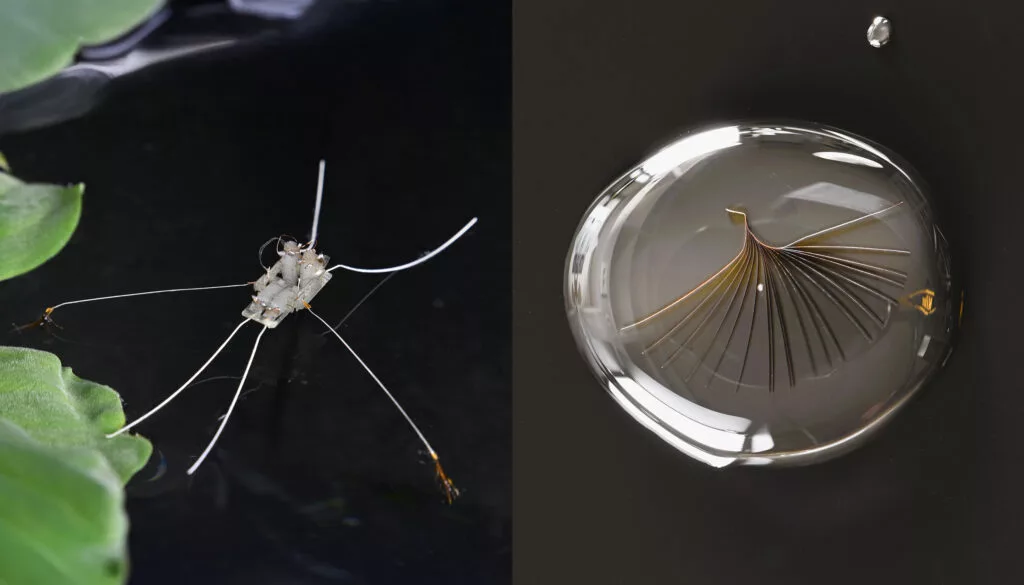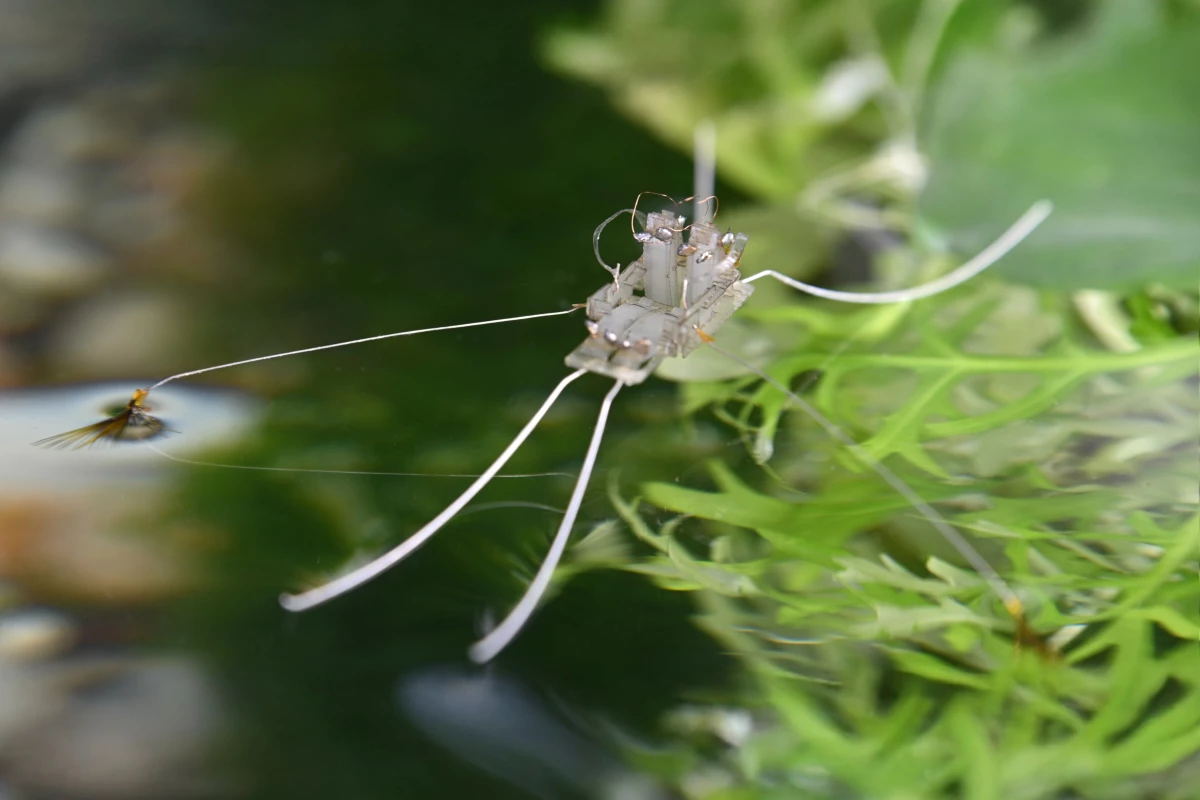Although we've seen a number of different robotic water striders over the years, scientists are still finding clever new aspects of the insects to replicate. Recently, for instance, researchers created a strider-bot that zips across the water's surface via fans on its feet.
Measuring only 3 mm long, water striders of the genus Rhagovelia really are something special.
On the ends of their two long middle legs – which are the ones they use for propulsion – there are feathery appendages which fan out upon hitting the water's surface. As the legs are then drawn back on the forward stroke, those now-underwater fans cup the water like the webs between a frog's toes, rapidly rowing the insect forward.
Upon being drawn up out of the water at the end of the stroke, the wet strands of the fan wick together into a point – sort of like the bristles of a freshly dipped paintbrush. This makes the appendage more streamlined as the leg swings back forward, on its way to execute another stroke.

The fans allow the insects to shoot across the surface at speeds of approximately 120 body lengths per second. What's more, by deploying a single water-grabbing fan on just one side, the striders can pull off 90-degree turns in about 50 milliseconds.
Needless to say, if you were designing aquatic robots, it would be great if they were so agile. With that thought in mind, scientists from the University of California-Berkeley, Korea's Ajou University, and the Georgia Institute of Technology decided to take a closer look at Rhagovelia.
Utilizing electron microscopy, Ajou's Prof. Je-Sung Koh and postdoctoral researcher Dongjin Kim found that the individual strands of each fan consist of a central flat, flexible, ribbon-like strip with smaller barbules branching off the sides of it – it really is a lot like a feather. This design allows the appendages to fan out underwater, so they can be used like an oar.

The scientists additionally discovered that the water's surface tension provides all the elastic force that is needed to cause the strands to fan out. It had previously been assumed that the fanning action was muscle-powered. A small amount of muscle power is utilized to hold the fans tense during the stroke, but none is used to deploy them.
Based on these findings, the team created a robotic version of the insect, named Rhagobot.
It's certainly bigger than its namesake, coming in at 8 cm long by 10 cm wide by 1.5 cm high (3.1 by 3.9 by 0.6 in). At the end of each of its two middle legs is a 1-milligram Rhagovelia-like fan – complete with the flat-ribbon microarchitecture – measuring 10 by 5 mm.

The whole bot, which is hardwired to an external power source, weighs just one-fifth of a gram. It's currently capable of scooting across the water's surface at two body lengths per second, and making 90-degree turns in less than half a second. It is hoped that descendants of Rhagobot will be even faster and more agile, making them useful in applications such as search-and-rescue or environmental monitoring.
"Our robotic fans self-morph using nothing but water surface forces and flexible geometry, just like their biological counterparts," says Prof. Koh, senior co-author of the study along with Georgia Tech's Prof. Saad Bhamla. "It is a form of mechanical embedded intelligence refined by nature through millions of years of evolution. In small-scale robotics, these kinds of efficient and unique mechanisms would be a key enabling technology for overcoming limits in miniaturization of conventional robots."
A paper on the research, which was led by UC Berkeley's Asst. Prof. Ortega-Jiménez, was recently published in the journal Science. You can see Rhagobot in action, in the video below.
Sources: UC Berkeley, Georgia Tech






